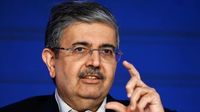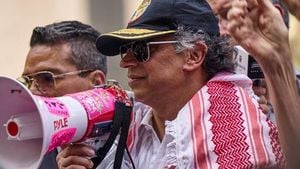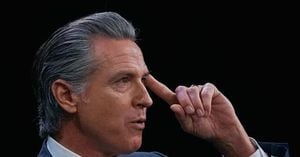When former U.S. President Donald Trump announced a sweeping new round of tariffs on Indian exports in July 2025, the news landed in New Delhi like a thunderclap. For Indian business leaders and policymakers, the message was impossible to ignore: the world’s largest democracy, long accustomed to steady economic progress and relative macroeconomic calm, suddenly found itself staring down a new era of global trade uncertainty.
Uday Kotak, founder of the Kotak Mahindra Group and one of India’s most respected business voices, didn’t mince words in his recent interview with the Financial Times. “We must think about this as an opportunity for us to get out of our cruise mindset and from a comfort mindset to ‘we are at risk’,” Kotak warned, as reported by Business Today and Financial Express. For Kotak, Trump’s dual-tariff regime—a 25% reciprocal levy topped by another 25% “punishment” for India’s ongoing purchase of discounted Russian crude oil—was more than a diplomatic spat. It was a wake-up call.
Trump’s rationale, as covered by multiple outlets, centered on what he called “profiteering” from Russia’s war economy. For India, which has continued to buy Russian oil at reduced prices despite Western sanctions over the Ukraine conflict, the penalties were both symbolic and substantial. The total 50% tariff wall now facing Indian exporters threatens to shave 0.5 to 0.7 percentage points off India’s GDP growth, according to leading analysts cited by Business Today. That’s not pocket change for a country still climbing the development ladder.
Yet, for Kotak, the crisis also presents a rare chance to rethink India’s economic strategy. “There’s a sense of urgency for transforming India,” he said. “Manufacturing has to play a very important role,” Kotak emphasized, arguing that Indian producers can no longer afford to depend solely on the vast domestic market. “It leads to avoiding cutting-edge precision,” he noted, highlighting how global competition is the real test of quality and innovation.
India’s macroeconomic fundamentals, Kotak insisted, remain robust. “Our fiscal deficit is under control, our current account is under control, you’ve got macroeconomic stability.” But comfort, he cautioned, is not the same as progress. With a per capita GDP of just $2,700—starkly lower than China’s $13,300 and the United States’ nearly $89,000—India’s development story is still a work in progress. “At the current ‘cruise’ level, we’ll keep on improving, but is it fast enough for us to get past the middle-income trap? I think there’s a gap,” Kotak told the Financial Times.
The middle-income trap, a term that has haunted policymakers across emerging markets, describes the phenomenon where rapid early growth stalls before a country achieves high-income status. For India, the threat is not just theoretical. As Kotak explained, “India, with a per capita GDP of $2,700, cannot be in a comfort zone when compared to China ($13,000) and the US ($89,000).” The numbers speak for themselves—and they don’t flatter India’s ambitions.
To break out of this rut, Kotak has called for a targeted, aggressive approach: direct fiscal support to turbocharge small businesses, especially in manufacturing, research and development, and technology. “Direct monetary support—capital, private equity and risk capital—from the government to small and medium industries would ‘turbocharge’ manufacturing, research and technology in India,” he explained. In his view, the government must step in with both liquidity and long-term investment to help micro, small, and medium enterprises (MSMEs) weather the tariff storm and seize new opportunities.
This isn’t just Kotak’s solo crusade. Earlier in August, Mahindra Group Chairman Anand Mahindra and RPG Enterprises’ Harsh Goenka also urged the government to direct liquidity towards MSMEs and exporters, especially those looking to shift away from China and find new markets. Their chorus of concern reflects a growing consensus among India’s business elite: the global trade landscape is shifting, and India’s response must be swift and strategic.
Trump’s tariff onslaught, as reported by Financial Express, is not entirely unprecedented. Trade tensions between the U.S. and India have simmered for years, flaring up over issues ranging from agricultural subsidies to digital services taxes. But the sheer scale and timing of this latest move—coming as the world economy still recovers from the pandemic and grapples with the fallout of the Ukraine war—make it uniquely consequential.
For Indian exporters, especially those in sectors like textiles, chemicals, and engineering goods, the new tariffs represent a direct hit to competitiveness. Many companies now face the daunting task of either absorbing the additional costs or passing them on to American consumers, risking a loss of market share. The knock-on effects could ripple across supply chains, employment, and investment decisions for months to come.
Still, Kotak remains optimistic about India’s underlying strengths. “India’s macroeconomic situation is very comfortable. Our fiscal deficit is under control, our current account is under control, you’ve got macroeconomic stability,” he reiterated. But he’s also clear-eyed about the challenges ahead. “Policymakers and businesses should use the trade war to get focused on productivity, efficiency, excellence and building world-class brands.” In other words, the answer isn’t retreat—it’s reinvention.
That reinvention, according to Kotak and his peers, must start with MSMEs. These businesses form the backbone of India’s manufacturing and export sectors, employing millions and driving innovation at the grassroots level. Yet, they often struggle with limited access to capital, outdated technology, and regulatory hurdles. By channeling budgetary support—whether in the form of grants, concessional loans, or equity infusions—the government can help MSMEs upgrade their capabilities and compete on the global stage.
There’s a broader lesson here, too. As the world fragments into competing economic blocs and geopolitical fault lines deepen, countries like India can no longer assume that old certainties will hold. The “cruise mindset” of steady, incremental gains is no match for a world where shocks can come from anywhere—be it a presidential tweet or a sudden change in commodity flows.
Looking ahead, the big question is whether India’s policymakers will seize this moment to push through the structural reforms that Kotak and others are calling for. Will the country double down on manufacturing, innovation, and global integration? Or will it settle for muddling through, hoping that the storm will pass?
One thing is clear: the comfort zone is no longer an option. As Kotak put it, “There’s a sense of urgency for transforming India.” The coming months will reveal whether India can turn crisis into catalyst—or whether it risks falling further behind in the race for global economic leadership.




